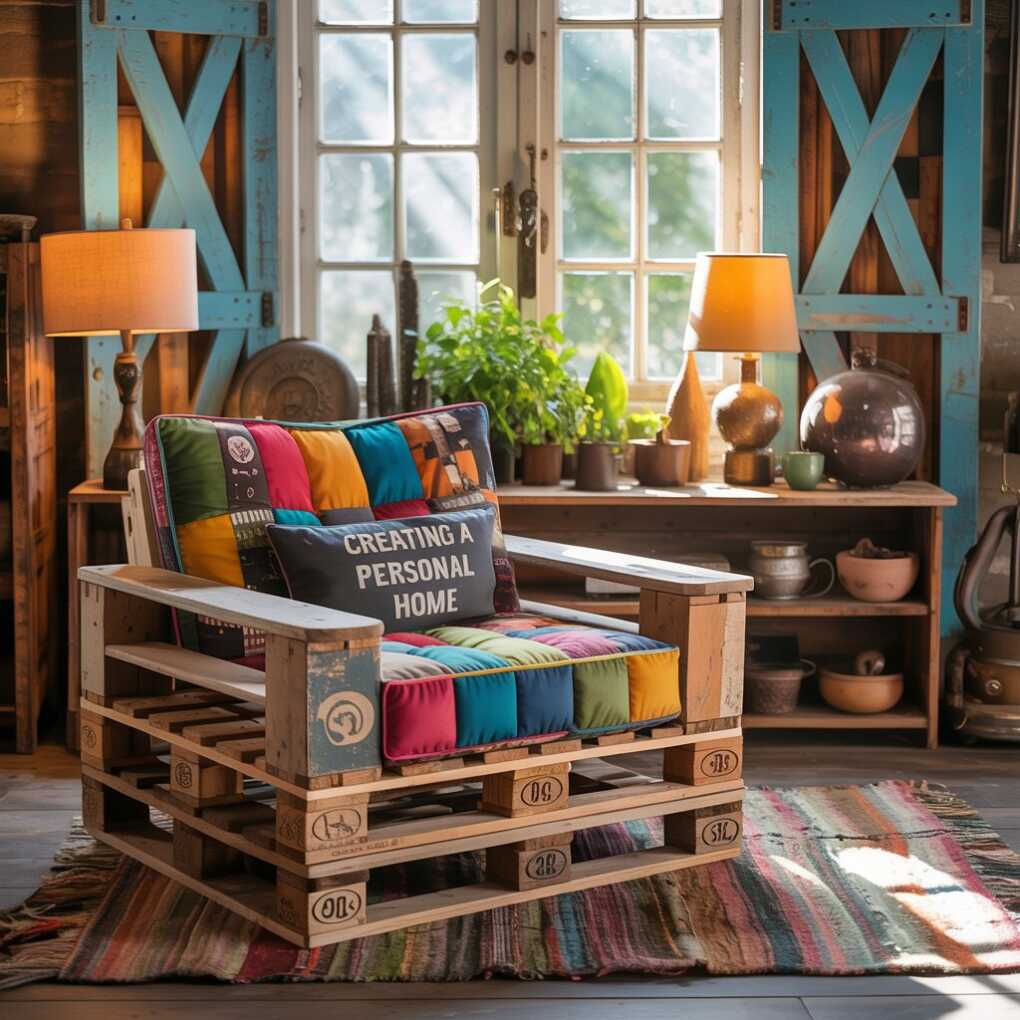The first week in a new apartment always has a strange kind of quiet. You hear your footsteps echo in ways they never will again once the space fills with furniture. Cardboard boxes pile in corners, their sides sagging from the move. A single chair might sit in the middle of the living room, holding a laptop or your first takeaway dinner.
That empty stage is both intimidating and exhilarating. Furniture is more than decoration—it decides how you move through the rooms, how you gather, how you rest. The way you furnish a space will change how it feels underfoot and how you feel in it.

Skipping the showroom route changes the pace and the tone. Without the bright lights and preset layouts of big-box stores, you aren’t simply filling space. You’re curating. Each piece has the potential to carry a history—one you inherit, or one you create. Instead of rows of identical couches, you’ll find options with quirks and edges, shaped by previous owners or your own hands.
There’s a thrill in knowing that every object you choose could have a story. A coffee table rescued from a neighbor’s move. A chair you pulled from storage and reimagined. A shelf built from weathered wood that once lined a workshop wall. That personal investment makes the process less about spending money and more about shaping an environment that belongs to you.
The Joy of the Hunt
You start looking differently at weekend mornings. The early light has a way of making garage sales feel like treasure hunts. Card tables set up on driveways display decades of accumulated life—brass candlesticks, odd glassware, framed photos of places you’ve never been. The air smells faintly of brewed coffee and newsprint from folded newspapers used to wrap fragile finds.
Flea markets pull you into a different rhythm. The best pieces often come from the stalls where the sellers want to tell you about them. You lean in, listening to the story of a chair’s previous owner or the road trip where someone picked up that lamp. These conversations slow you down, making the find as valuable as the object itself.
Online searches bring their own form of patience. Marketplace, Craigslist, and local swap groups reward those willing to scroll past dozens of listings until the right one appears. The hunt might take days or weeks, but that delay often means you end up with something worth the wait.
Then there are the curbside surprises. The best street finds often appear at unexpected moments—on your way to work, after a late dinner, during a walk in the rain. A side table left near the bins. A mirror leaning against a wall. Someone else’s discard can become your favorite corner accent.
Rolling Up Your Sleeves
Finding is only the first step. The real magic comes from seeing beyond what’s there. A scratched table is just a table until you sand it back to bare grain and feel the wood’s warmth under your hands. Each pass of sandpaper removes years of neglect, revealing lines and patterns that make the piece unique.
Upholstery invites a different kind of transformation. A tired chair can be given new life with a fabric that fits your space—bold patterns for a lively room, soft textures for a calmer one. Staple guns and upholstery tacks become tools for storytelling, letting you decide how the seat will look and feel.
Repurposing stretches the imagination. A wooden ladder can hold towels in a bathroom or become shelving for a study. An old door, sanded and sealed, makes a sturdy, character-filled desk. These shifts in function turn ordinary materials into custom pieces, the kind you’d never find in a showroom.
This is where small flaws work in your favor. A dented drawer front or uneven leg doesn’t necessarily need correction. In the right setting, imperfections bring balance to polished elements. They make a home feel lived-in from the start.
Building Something From Nothing
Some of the most rewarding pieces start as raw material. Reclaimed wood has a depth that new lumber often lacks. You can see its history in the grain, knots, and nail holes. Shaping that into a coffee table, bookshelves, or even a bed frame ties your space to another place and time.
Learning to build teaches more than technique. It changes how you see every object in your home. You start noticing joinery, weight, and balance. You learn which woods take stain well and which need a clear coat to shine. You discover shortcuts—a clamp here, a pre-drilled guide hole there—that make each project smoother.
Pairing DIY projects with rescued finds helps your home avoid the stiffness of a matched set. A handmade table beside a thrift-store armchair tells a richer story than a room where every item arrived from the same delivery truck.
And when you make something yourself, the small variations become part of its identity. A slightly uneven edge or a visible joint reminds you that the piece exists because of your time and choices.
Bringing It All Together
The real challenge—and joy—comes when you start blending everything. Different eras can coexist if they share a common thread, like tone, texture, or material. A mid-century sideboard can sit comfortably beside a vintage rug and a sleek modern lamp. It’s less about matching and more about conversation between objects.
Statement pieces act as anchors. A bold sofa or an intricate dining table can set the tone for a whole room. Around that, quieter elements can shift and change over time without losing cohesion.
Small details tie the collection together. Lighting softens hard edges. Textiles—throws, cushions, rugs—add warmth and connection. Plants bridge the gap between furniture and space, making the room feel alive. Even a piece you picked up at a garage sale can feel intentional when it shares light or color with the rest of the room.
And sometimes, the oddest combination works. A rescued diner booth in a sunlit kitchen, for example, can become a place where friends gather for hours, much like how restaurant booths naturally invite long conversations and shared meals.
Leaving open space matters, too. Not every corner needs to be filled immediately. Gaps leave room for the treasures you haven’t found yet, the ones that will eventually arrive without you forcing them.
Keeping the Story Alive
Once your home feels whole, the work shifts from building to maintaining. Good care starts with simple habits—dusting surfaces, wiping spills quickly, and keeping fabrics clean. Wood benefits from the occasional oiling or waxing, keeping it rich and resistant to wear.
Repairs extend the life of your furniture and keep its story intact. A wobbly chair leg can be fixed in minutes with the right tools. Upholstery tears can be patched before they grow. In cities and small towns alike, there are craftspeople who specialize in bringing damaged pieces back to life.
Changing styles don’t have to mean discarding what you’ve built. Trading pieces with friends, selling through online marketplaces, or donating to local shops keeps furniture in circulation. The pieces you pass on can find new homes, while you bring in fresh finds that fit your current needs.
Over time, your apartment becomes more than the sum of its furniture. It turns into a scrapbook made of wood, fabric, and metal. Every chair, table, and shelf holds a place in your personal timeline, from the first thing you brought home to the most recent project you finished.
The space is no longer just a place to live—it’s a place that’s lived with you, carrying the marks of all the mornings, evenings, and seasons you’ve spent within its walls. And the best part is knowing the story will keep growing, one piece at a time.
